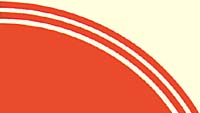
Philco Code and Run Numbers Explained
Philco began doing the code numbering in 1932 with their Models 71 and 91. Each of these had slight differences in the cathedral (Baby Grand) and console versions; chiefly, the addition of twin speakers in the consoles. The 71 and 91 Baby Grands were initially called "Code 121," while the 71 and 91 console versions were "Code 221." These codes changed during the 1932 season as production changes were made.
In SOME (not all, see explanation below) later models, i.e. Model 89, different code numbers indicated production changes, as noted above. A Model 89 Code 121 only has three knobs and is an AM-only set, while a Model 89 Code 123 has four knobs and receives AM and the old "police" band.
Philco was not consistent with this code numbering, however. Model 89 is a good example, again: in 1935, they changed the det-osc tube in the 89 from a Type 36 to a Type 77; yet even though a new Service Bulletin (schematic) was issued, it continued to be "Code 123."
Some Philco sets, such as Model 60, were all Code 121 even though changes were made to the circuitry over its three-year production run.
From Ron Ramirez, PhilcoRadio.com
Information on [Philco radio] production changes is given with respect to the "run" numbers and "code" numbers. Briefly, the essential difference between different runs and codes is as follows:
• When minor changes are made in a radio, a new production run, identified by a new run number, is started.
• When more extensive, or basic, changes are made, production of a new code, identified by a new code number, is started.
• Code numbers are stamped on the back of the chassis [after 1946]. (Code 121 sets are never marked with a code number; therefore, if no code mark is found on the chassis, the set may be assumed to be Code 121.)
• Prior to 1946, code numbers are printed on the paper model number tags, or tube location diagram tags located on the inside of the cabinets or on the rear of the chassis. There is no consistancy in labeling all code numbers, however. Later code numbers like 123, 125, etc. may not appear on the set or cabinet.
• Run numbers, for post-war sets 1946 and later, are identified by the last two digits of a numerical series on the back of the chassis. For instance, if the series is 0332016702, the set is Run 2.
• The total production changes given for a particular radio are cumulative; for example, in order to obtain complete details on a set of a given run number, say Run 3, it is necessary to consult the original manual, plus the production changes given for Runs 1, 2, and 3. NOTE: in sets (1946 and later) having a separate r-f chassis, the run number on the r-f- chassis is independent of the run number of the main chassis. Phonograph chassis are stamped with the word "RUN" or the letter "R" followed by a number.
Introduction from the Philco Home Radio Yearbook for 1946-1947, page III, copyright 1948, Philco Corp.
Additional comments and additions in [brackets] by the author.
Additional comments and additions in [brackets] by the author.
